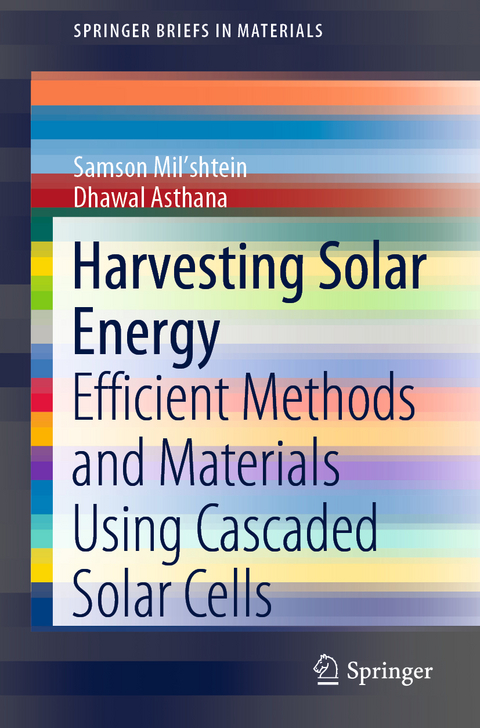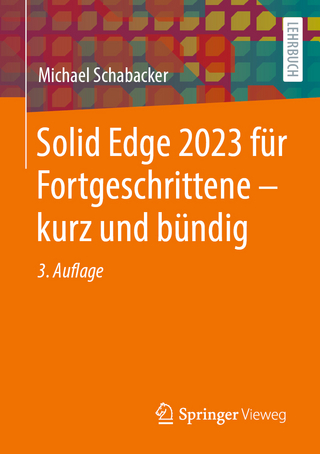
Harvesting Solar Energy
Springer International Publishing (Verlag)
978-3-030-93379-1 (ISBN)
lt;b>Dr. Sam Milshtein is a Professor of Electrical and Computer Engineering at University of Massachusetts at Lowell since 1987. From 1990 he is the director of the Advanced Electronic Technology Center of UMass. During 1998-1999 he served as Assistant Dean of Engineering for Research, UMass, Lowell, MA. He received his M. Sc. Degree in Semiconductors from State University of Odessa (Ukraine), and Ph. D. from University of Jerusalem (Israel). Dr. Mil'shtein worked for semiconductor companies in Russia and the USA, was teaching at Russian, Israeli and US Colleges, served as research fellow in Russian Academy of Sciences and at AT&T Bell Laboratories. At age 23 he was the youngest professor of Semiconductor Electronics Department at Polytechnic College of Kherson (Ukraine). Working as a member of the research staff in the Institute of Solid State Physics, Russian Academy of Science, he received in 1971 the First Prize of ISSP of the Russian Academy of Science for the discovery of dislocation based p-n junctions in Si and Ge. In May 2015, for achievements in research, Prof. S. Mil'shtein was elected to be a member (Academician) of Academy of Science, Republic of Kazakhstan. Prof. S. Mil'shtein served as member of organizing committees at numerous international conferences on microelectronics and nanotechnology. His publication list carries over 300 publications, patents, and conference presentations. His current research work covers high speed quantum electronics, design of solar sell systems, imaging systems for biometrics and medical engineering applications.
Dhawal Asthana graduated in 2017 from Madan Mohan Malaviya University of Technology (MMMUT), Gorakhpur, India with a bachelor's degree in Electrical Engineering. After completing MS in Electrical and Electronics Engineering from University of Massachusetts, Lowell, in 2019, he has been conducting research as a doctoral student of Electrical Engineering as an advisee of Prof. Samson Mil'shtein at the same university. While his doctoral dissertation focuses on integration and synchronization of solar PV and wind power generation for microgrid and DG scale systems; over the span of his academic career, he has co-authored 15 publications and co-invented 2 upcoming patents that cover the diverse fields of solar photovoltaics, electric vehicles, wind energy, machine learning, electronic devices- RF HBTs and GaN HEMTs and optoelectronic devices. As a graduate student at UMass Lowell, he was a recipient of the Provost Graduate Fellowship in 2017. Being a member of the Editorial Board (2014-2017) at MMMUT, Gorakhpur, he also served as an editor for the monthly newsletter and annual magazine of the university.
Design of Heterojunction Cascaded Solar Cells.- Design of Heterostructure Solar Cell Using Non-Crystalline a-Si/poly-Si.- Enhanced Energy Production by Corrugated Si Solar Sells Installed on Tracking/Antitracking Systems.
| Erscheinungsdatum | 03.02.2022 |
|---|---|
| Reihe/Serie | SpringerBriefs in Materials |
| Zusatzinfo | VIII, 51 p. 31 illus., 7 illus. in color. |
| Verlagsort | Cham |
| Sprache | englisch |
| Maße | 155 x 235 mm |
| Gewicht | 107 g |
| Themenwelt | Technik ► Maschinenbau |
| Schlagworte | Corrugated Solar Cells • Heterojunction Cascaded Solar Cells • Heterostructured Solar Cells • Integration of Solar Cells in Electric Grid • Materials Selection for Solar Cells • multijunction solar cells • p-i-n Junction • P-N junction • Reflection and Antireflection Coatings • Solar Cell Design • Solar energy conversion • Tandem Solar Cells |
| ISBN-10 | 3-030-93379-2 / 3030933792 |
| ISBN-13 | 978-3-030-93379-1 / 9783030933791 |
| Zustand | Neuware |
| Informationen gemäß Produktsicherheitsverordnung (GPSR) | |
| Haben Sie eine Frage zum Produkt? |
aus dem Bereich


